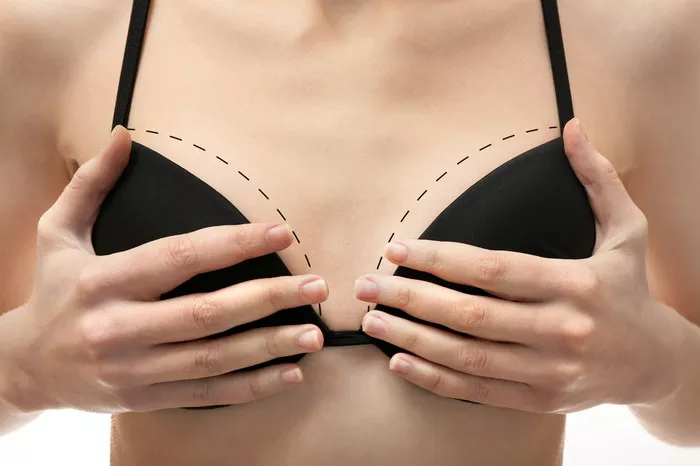Breastfeeding is a natural and bonding experience between a mother and her child. If you’re considering breast implants or have already undergone breast augmentation surgery, you may have concerns about how breast implants can affect your ability to breastfeed. It’s important to understand that while breast implants can potentially impact breastfeeding, many women with implants successfully breastfeed their babies. In this comprehensive article, we will explore the relationship between breast implants and breastfeeding, the factors that can influence breastfeeding success, and potential considerations for mothers with breast implants.
Understanding Breast Implants and Their Placement
Breast implants are typically placed either beneath the breast tissue (subglandular placement) or beneath the chest muscle (submuscular placement). The choice of implant placement depends on various factors, including the patient’s anatomy, desired outcome, and the surgeon’s recommendation. Understanding the placement of breast implants is essential when considering their potential impact on breastfeeding.
How Breast Implants Can Affect Breastfeeding
Breast implants can potentially affect breastfeeding in several ways. Here are some factors to consider:
1. Milk Production
The ability to produce milk depends on the functionality of the mammary glands and the ducts that transport milk. In some cases, breast augmentation surgery can cause damage to the milk ducts or interfere with the function of the mammary glands, which may impact the production and flow of breast milk.
2. Nipple Sensation
Breast augmentation surgery can sometimes affect nipple sensation. Reduced nipple sensitivity or altered nerve function can potentially impact the baby’s ability to latch properly and stimulate milk production. However, it’s important to note that changes in nipple sensation can vary among individuals, and not all women experience these alterations after breast augmentation.
3. Surgical Technique and Implant Placement
The surgical technique used during breast augmentation, as well as the placement of the implants, can influence the potential impact on breastfeeding. Subglandular placement (beneath the breast tissue) may have a higher risk of interfering with breastfeeding compared to submuscular placement (beneath the chest muscle). This is because subglandular placement may involve more manipulation of the breast tissue and the milk ducts, potentially affecting milk supply and delivery.
4. Scar Tissue and Capsular Contracture
Capsular contracture is a condition where scar tissue forms around the breast implant, causing it to become firm or distorted. While the presence of scar tissue itself may not directly impact breastfeeding, severe capsular contracture can potentially lead to breast shape and position changes, which may affect the baby’s ability to latch and breastfeed effectively.
Factors Influencing Breastfeeding Success with Breast Implants
While breast implants can potentially affect breastfeeding, it’s important to note that many women with breast implants are able to breastfeed successfully. Several factors can influence breastfeeding success:
1. Surgical Technique and Incision Placement
The surgical technique used during breast augmentation can influence the impact on breastfeeding. Techniques that minimize disruption to the milk ducts and the breast tissue may help preserve breastfeeding function. Additionally, the choice of incision placement can play a role. Incisions made around the areola (periareolar incisions) may have a slightly higher risk of affecting breastfeeding compared to inframammary incisions (made in the fold beneath the breast) or transaxillary incisions (made in the armpit).
2. Implant Placement
The placement of the breast implant can also influence breastfeeding success. Submuscular placement (beneath the chest muscle) is generally considered to have a lower risk of interfering with breastfeeding compared to subglandular placement (beneath the breast tissue). Submuscular placement tends to involve less manipulation of the breast tissue and milk ducts, potentially preserving breastfeeding function.
3. Pre-existing Breastfeeding Ability
The ability to breastfeed can be influenced by factors unrelated to breast implants, such as hormonal changes, individual anatomy, and the baby’s latch. Women who had successful breastfeeding experiences before breast augmentation surgery are more likely to continue breastfeeding successfully after the procedure.
4. Individual Variations
Every woman’s body and response to breast implants are unique. Some women may experience minimal or no impact on breastfeeding, while others may encounter challenges. Factors such as milk supply, nipple sensitivity, and individual healing and recovery processes can vary greatly. It’s important to consult with a healthcare professional experienced in breastfeeding and breast implants for personalized guidance and support.
Tips for Breastfeeding with Breast Implants
If you have breast implants and plan to breastfeed, here are some tips to increase your chances of successful breastfeeding:
1. Consult with a Lactation Consultant
A lactation consultant can provide valuable guidance and support during your breastfeeding journey. They can assess your breastfeeding technique, help with any latch issues, and provide advice specific to your situation.
2. Inform Your Healthcare Providers
Make sure to inform your healthcare providers, including your obstetrician, pediatrician, and lactation consultant, about your breast implants. This information will help them provide appropriate guidance and support tailored to your specific circumstances.
3. Monitor Your Milk Supply
Keep a close eye on your milk supply and monitor your baby’s growth and weight gain. Regular breastfeeding, frequent pumping, and maintaining good nutrition and hydration can help optimize your milk production.
4. Consider Supplementation
In some cases, if your milk supply is insufficient, your healthcare provider may recommend supplementing with formula to ensure your baby’s nutritional needs are met. Supplementing with formula does not mean you cannot breastfeed; it simply ensures your baby receives adequate nutrition.
Conclusion
Breast implants can potentially affect breastfeeding, but many women with breast implants successfully breastfeed their babies. The impact of breast implants on breastfeeding can vary based on factors such as the surgical technique, implant placement, milk duct integrity, nipple sensitivity, and individual variations. While there may be challenges, with proper support, guidance, and monitoring, women with breast implants can have a positive breastfeeding experience. Consulting with experienced healthcare professionals, including plastic surgeons and lactation consultants, is essential to navigate potential challenges and maximize your chances of successful breastfeeding with breast implants. Remember, each woman’s experience is unique, and personalized guidance is crucial to address your specific concerns and needs.


